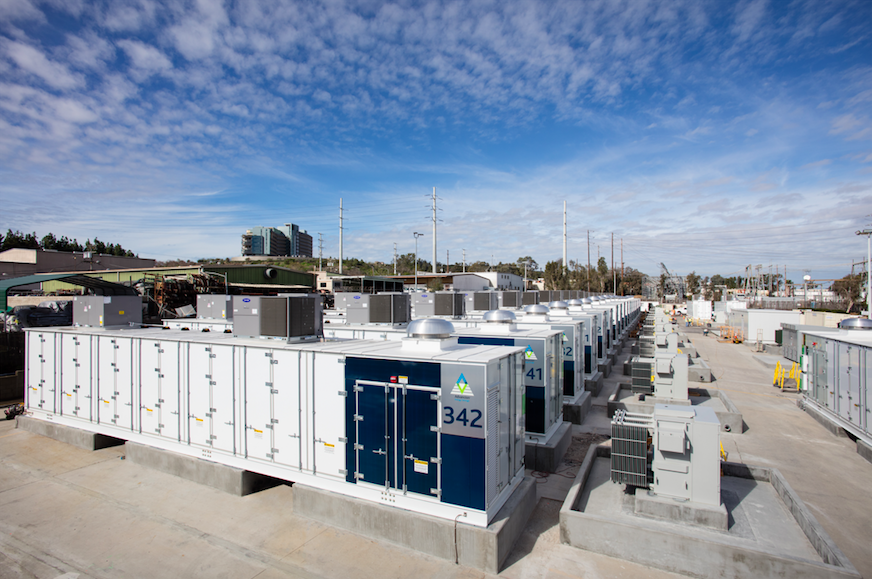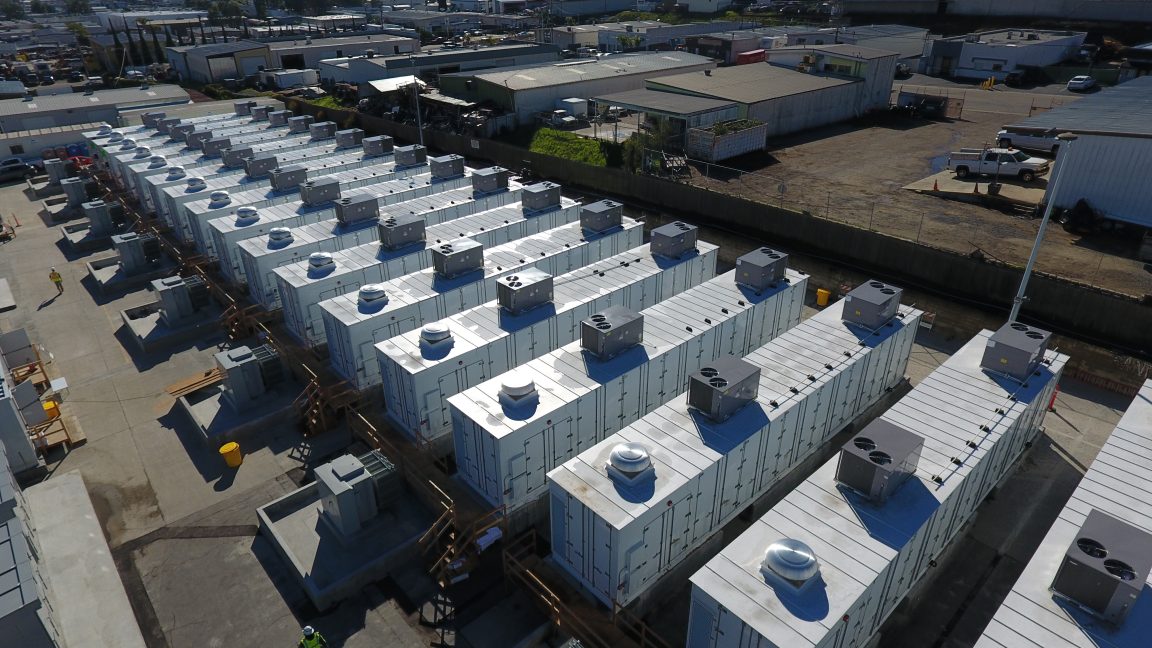
On Friday, Southern California utility San Diego Gas & Electric (SDG&E) held a small press conference in Escondido to show off its brand new energy storage facility, a 30MW battery system capable of storing 120MWh of energy, which can serve 20,000 customers for four hours. SDG&E also introduced a 7.5MW battery system built in El Cajon, CA.
The two projects were built after state energy officials ordered power companies to add lithium-ion battery storage to their grids this past summer following a massive methane leak at Aliso Canyon in California that put the region in jeopardy for natural gas shortages. AES Energy Storage, a Virginia-based company that has been building utility-grade batteries since 2008, built the system for SDG&E.
The installation is currently the largest grid-tied lithium-ion battery system in the US. Tesla announced a similar 20MW, 80MWh system at the end of January in conjunction with Southern California Edison. That installation is based in Ontario, CA.
The Escondido system consists of 24 containers hiding nearly 20,000 modules that hold 20 batteries each. SDG&E said it hopes to have 330 MW of energy storage on its system by 2030.
Speaking at the event, California Public Utilities Commissioner Michael Picker said, “I didn’t expect to see these kinds of prices in batteries until 2022, 2024 …we are far in advance of where we expected to be.” The president of AE Energy Storage praised his team for bringing “two projects online in record time,” a comment that many made at the Tesla battery inauguration as well. Because of the immediacy of the potential natural gas storage last summer, both AES Energy Systems and Tesla were chosen to build new systems for utilities based on how quickly the installations could be put in place. Future battery systems are not expected to go up quite as quickly.






 Loading comments...
Loading comments...
